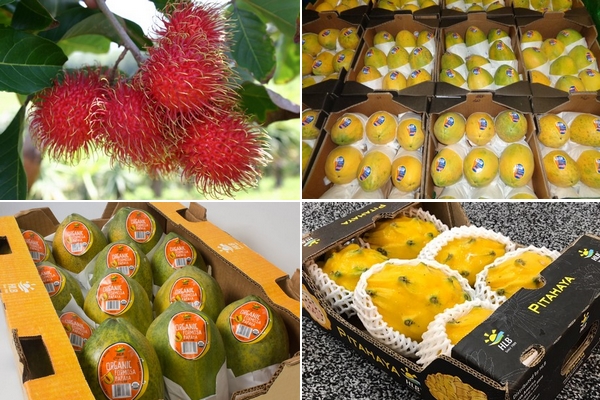Port of Miami specializes in tropical and exotic produce
South Florida is an important gateway for produce from South America arriving into the United States. Both the Port of Miami and Port Everglades have been specializing in handling produce, especially tropical and exotic items. Not only do these ports serve the Southeastern United States, produce gets distributed West, as well as up north, all the way into the Northeast. “One of the reasons for vessels docking in South Florida instead of the Northeast is that they gain a couple days transit time,” says Andres Ocampo with HLB Specialties. From South Florida, trucks can still cover the ground faster than boats can. In addition, volume plays a role. For tropical and exotic items especially, imported volumes do not always cover a full truck load. “The Less Than Truckloads (LTL) is a big market here and the Florida ports have experience with handling smaller volumes,” Ocampo explained.
Ports in the Northeastern part of the US, like Philadelphia, are key fresh produce ports, but they are more volume movers. In addition, they tend to be more congested. The South Florida ports are able to devote more attention to tropical and exotic items coming in.
Small fumigation capacity
However, the Port of Miami and Port Everglades do have a shortcoming. They don’t have the fumigation capacity that some other ports, like the Port of Philly, have. “Let’s start with saying that not all produce imported from South America needs to be fumigated upon arrival,” Ocampo mentioned. Some items, like papaya, mango and rambutan only require fumigation in case of a pest. Asparagus on the other hand is an example of a commodity that always needs to be fumigated upon arrival.
Asparagus is not a small commodity making its way into the US. “Last year, over 17 million cases of asparagus were imported from South America into the US,” says Charlie Eagle with Southern Specialties. “The vast majority is sourced from Peru and more than 98 percent of asparagus imports entered the US in South Florida. It’s only a very small number that goes directly to the West Coast.”
“At Southern Specialties we have invested in the infrastructure to optimize asparagus arriving in the port,” Eagle said. “We have trailers that are specifically designed for the fumigation process and they haul the product to our facility from the fumigation facility, which is located near the port.” However, with the import volume from South America having increased over the years, comes the need for more fumigation capacity.

Expansion will make Port of Miami most desired entry point
The Port of Miami is working on expansion of its fumigation facility. “This is a project that has been long awaited and has the opportunity to make South Florida ports and airports even more attractive,” says Priscilla Lleras Bush, representing the Peruvian Asparagus Importers Association. Lleras-Bush sees many opportunities to entice products entering the country to enter through South Florida.
“The importer community here has their finger on the pulse when it comes to streamlining and expediting the logistics cold chain for fresh fruits and vegetables. I am confident that an expanded facility, improved infrastructure and logistical cost reduction will make South Florida the most desired entry port to the US from South America. Florida brokers, trucking companies and importers have decades of experience and know all the ins and outs of being successful in delivering the best quality product to the market.”
Towards the end of April, the Peruvian Asparagus Importers Association will meet with the Port regarding the expansion and more details on the new facility should be announced then.
For more information:
Andres Ocampo
HLB Specialties
Tel: (+1) 954-475-8808
andres@hlbspec.com
www.hlbspecialties.com
Publication date: Wed 4 Mar 2020
Author: Marieke Hemmes
© FreshPlaza.com
Source: https://www.freshplaza.com/article/9195669/port-of-miami-specializes-in-tropical-and-exotic-produce/


